Aero 15 Vs Dell Xps 15 for Video Editing
-
 View now at Amazon
View now at Amazon -
 View now at Apple US
View now at Apple US -
 $2,049 at eBay
$2,049 at eBay -
 View now at Dell US
View now at Dell US -
 View now at Dell US Show More (8 items)
View now at Dell US Show More (8 items)
Apple's professional users -- especially those working in the creative industries -- have welcomed the company's renewed focus on its professional Mac products, following the long-awaited introduction of the 2019 Mac Pro desktop, and the 16-inch revamp of its flagship MacBook Pro laptop. But there's no doubt that Apple took its eye off the ball in the Mac market while it spent years concentrating on the iPhone, and that has given rival PC manufacturers a real opportunity to capture a slice of Apple's creative pie.
Intel got the ball rolling back in 2018 with its Creator PC initiative, which was further boosted by Nvdia's Studio campaign the following year, which aimed to extend the company's graphics technologies beyond its traditional gaming audience and into the creative industries.
As a result, all the main PC manufacturers, including market leaders such as Dell, HP and Lenovo, now offer extensive portfolios of laptops and desktop PCs that are specifically aimed at creative users in fields such as graphic design, photography, video editing and animation. The involvement of Nvidia, with its RTX ray-tracing graphics technology has also attracted gaming specialists such as Razer and Gigabyte, whose expertise with high-end gaming graphics has allowed them to design some impressively powerful laptops for professional users.
So creative users are now spoilt for choice, with dozens of laptop and desktop systems now vying for their attention. Here, we're focusing on 'creator' laptops. Check out our companion list of the best desktops for this use case.
Acer ConceptD 7 Ezel
15.6-inch 4K touch-screen with a versatile hinge

The ConceptD 7 that ZDNet reviewed at the end of 2019 was an attractive desktop-replacement laptop for creative users, and the company has extended the range with an Ezel variation that introduces an unusual display design.
The highlight is the 15.6-inch touch screen with 4K resolution that supports 100% of the Adobe RGB colour space, which will be suitable for a wide range of graphics and design tasks (although there's no mention of video colour standards, such as DCI-P3). Like many convertible laptops, the ConceptD 7 Ezel allows you to fold the screen right back so that the device acts like a large tablet. However, the hinged display panel can also tilt upwards -- rather like Microsoft's Surface Studio desktop PC -- allowing you to sketch at a more comfortable angle with the Wacom stylus that's included in the price.
That versatile design provides plenty of power too: a mid-range model in the UK with a 10th generation, eight-core Core i7 processor running at 2.3GHz (up to 5.1GHz with TurboBoost), 32GB of RAM, 1TB of solid-state storage, and an 8GB Nvidia Quadro RTX 2080 Super graphics card costs £3,499 (inc. VAT). A similar model in the US with a 2TB SSD costs $3,999.99.
Apple MacBook Pro 13-inch (Late 2020)
Enter the Apple Silicon M1
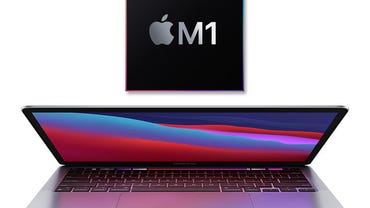
Externally, the 13-inch MacBook Pro launched in November 2020 didn't differ much from previous generations. But on the inside, it was an entirely new beast. The first 'pro' Mac based on the Apple Silicon M1 system-on-chip delivered impressive performance -- including, crucially for creators, GPU performance -- and battery life, with ZDNet's Jason Cipriani claiming it was "the fastest Mac I've ever used".
But while Apple's Rosetta 2 technology provided compatibility with existing software and apps, which were written for Intel processors, developers still needed to update their software in order to gain the full performance benefits of Apple's new processors.
Since then, Microsoft has announced native M1 support for Office 365, and Adobe has just released the M1 version of Photoshop, which it claims provides 50% performance increase over the MacBook Pro's Intel-based predecessor. Support from these key developers should boost acceptance of the new Apple Silicon Macs, and the rumours of Apple's next-generation M1X chip have Mac users eagerly awaiting the next updates for the MacBook Pro and iMac ranges.
Apple MacBook Pro 16-inch (2019)
Intel-powered, with DCI-P3 support and excellent speakers
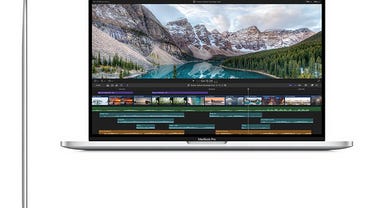
After years of focusing on the iPhone, Apple turned its attention back to its traditional creative audience towards the end of 2019, with an entirely new Mac Pro, and this well-received revamp of its veteran 15-inch pro laptop.
The clue's in the name, of course, and the 16-inch MacBook Pro managed to fit a larger 16-inch display into a design that's only 9mm wider than its 15-inch predecessor, while keeping the weight down to just 2kg. The 3,072 by 1,920 (226ppi) display is a delight, and supports the DCI-P3 colour standard used in professional broadcasting; Apple is also making a renewed pitch for the audio and music markets, squeezing an impressive high-quality speaker and microphone system into the 16-inch MacBook Pro's slimline design.
It's expensive, of course, but with 6-core Core i7 and 8-core Core i9 processor options, AMD Radeon Pro graphics, all-day battery life, and a new keyboard design, Apple's 16-inch MacBook Pro has restored the faith of many long-time Mac users.
Dell Precision 3560
Entry-level 15.6-inch system with 11th-gen Intel Core CPUs
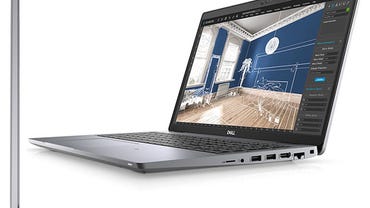
Dell's Precision range of mobile workstations provides impressive performance for graphics and video work, and the new 15.6-inch Precision 3560 is an attractive entry-level system that introduces Intel's 11th generation processors to the range.
If you're on a budget, then a model with Intel's integrated Iris XE graphics is available for around $1,200/£1,000, but several other configurations are available with discrete Nvidia T500 graphics. Prices for these models start at $1,879 or £1,451.83 (inc. VAT) with a quad-core Core i5-1145G7 processor running at 2.4GHz (up to 4.2GHz with TurboBoost), 16GB of RAM and a 256GB solid-state storage.
Other options include quad-core Core i7 processors, and a variety of memory and storage options. Oddly, most configurations are limited to a display with standard FHD (1920 x 1080, 141.2ppi) resolution, but Dell's UK website offers a 'build your own' customisation option with a 4K display (3840 x 2160, 282.4ppi) available for an additional £495.30 (inc. VAT). US pricing for the 4K option has yet to be announced.
Dell Precision 5750
Compact and customisable 17-inch system

Dell was clearly aiming for a slice of Apple pie when it launched the Precision 5750 at the end of 2020, boasting that it was the world's most compact 17-inch workstation (and, briefly, claiming to be the lightest 17-inch model too). Its weight varies between 1.8kg and 2.5kg, depending on configuration, but that's still a good weight for such a high-end performer.
The prebuilt configurations sold by Dell are different in the US and UK, although these tend to be lower-spec models with modest FHD (1920 x 1200, 133.2ppi) displays and integrated graphics.
Creative users will want to choose the customisable 'Build Your Own' option instead, which offers a 4K (3840 x 2400, 266.4ppi) touch-sensitive display, with a starting price of $2,446.02 or £3,360.20 (inc. VAT). That price includes a quad-core Core i5-10400H processor running at 2.6GHz (up to 4.6GHz with TurboBoost), along with 16GB of RAM, 256GB of solid-state storage and discrete Nvidia Quadro T2000 graphics. Other options include Core i7 and Xeon processors and Quadro RTX 3000 graphics.
It's a shame that the high-resolution display only supports Adobe's RGB colour standard, and doesn't offer DCI-P3 support as an option for professional-level video editing.
Gigabyte Aero 15 OLED
15.6-inch 4K OLED screen with DCI-P3 support
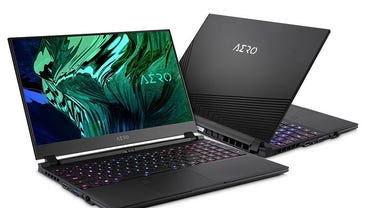
Gigabyte recently took time out from its traditional gaming pursuits to announce updates for its Aero range of 'creator laptops'. First out of the gate is its new Aero 15 OLED, which as the name suggests, boasts a 15.6-inch AMOLED display with 4K resolution (3840 x 2160, 282.4dpi), plus updated Nvidia GeForce RTX 30 Series graphics.
There are three models available in the 2021 range, starting at a competitive $1,599 or £1,699 (inc. VAT) with an 8-core Core i7-10870H processor running at 2.2GHz (up to 5.0GHz with TurboBoost), 16GB of RAM, 512GB of solid-state storage, and RTX 3060 graphics. Other options include a Core i9 processor and RTX 3070 or RTX 3080 graphics.
Along with the new GPU options, this year's Aero 15 OLED models also support both the Adobe RGB and DCI-P3 colour standards for professional video editing, which was lacking in last year's models. However, the 2020 models are still on sale, with older RTX 20 Series graphics, so make sure you double-check the specs before buying.
HP ZBook Fury 17 G7
Customisable large-screen laptop with plenty of CPU and GPU options
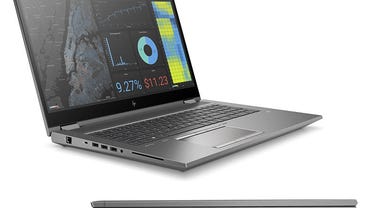
HP's ever-expanding range of ZBook mobile workstations now boasts several different laptop designs, including the lightweight Firefly. But sitting at the top of the range, like King Kong atop a skyscraper, is the ZBook Fury G7.
The Fury G7 is available with either 15.6-inch or 17.3-inch displays but there's no point in compromising with a desktop replacement system such as this, so we'd opt for the 17-inch model, which has a starting weight of 3kg, depending on configuration. It's also noticeable that HP studiously avoids any mention of battery life, so this is very much a laptop designed for desktop-replacement use, at home or in the office.
There are a number of prebuilt configurations available on HP's website, starting at $2,299 or £1,822.80 (inc. VAT), with a 6-core Core i7-10750H processor running at 2.6GHz (up to 5.0GHz with TurboBoost), 16GB of RAM, 512GB of solid-state storage and Nvidia Quadro T1000 graphics.
That price only includes a modest FHD (1920 x 1080, 127.3ppi) display, but HP's extensive customisation options allow you to add a 4K display (3840 x 2160 resolution, 254.7ppi) for a rather hefty $507 in the US, or around £260 (inc. VAT) in the UK. You can go further as well, with a wide range of CPU, GPU and other options available, including 8-core Core i9 and Xeon processors, and up to GeForce RTX 5000 graphics for high-end video and 3D work.
HP ZBook Firefly 15
The most portable HP ZBook mobile workstation
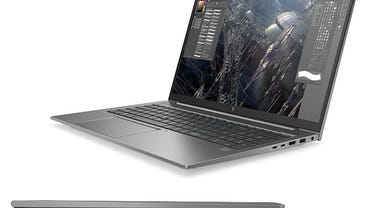
We've been impressed by HP's ZBook laptops in the past, and the company continues to expand the ZBook range with a variety of models aimed at different types of creative users and tasks. The ZBook Firefly represents the most portable end of the range, with this 15.6-inch model measuring 19mm thick, weighing 1.75kg, and boasting 14-hour battery life. There's a more compact 14-inch model available too, which weighs just 1.4kg.
HP provides a number of preconfigured devices, with the sweet spot in the UK being a £1,810.80 (inc. VAT) G7 model with a 4K (3840 x 2160, 282.4ppi) screen, a quad-core Core i7-10610U processor running at 1.8GHz (up to 4.9GHz with TurboBoost), a healthy 32GB of RAM, 1TB of solid-state storage, and discrete Nvidia Quadro P520 graphics.
HP's US website offers the G8 model with 11th-generation Intel Core processors (this is still listed as 'coming soon' on the UK website at the time of writing [April 2021]), starting at $1,580.60 for an FHD display, a Core i5-1135G7 processor, 8GB of RAM, 256GB of SSD storage and Nvidia T500 graphics.
The ZBook Firefly's lightweight design does mean that it's primarily focused on 2D graphics and design work, and the display only supports the sRGB colour standard. But, of course, there are heavier and more powerful ZBook models that provide DCI-P3 support for video editing work as well.
Lenovo ThinkPad P15s
Lightweight entry-level system with Linux option
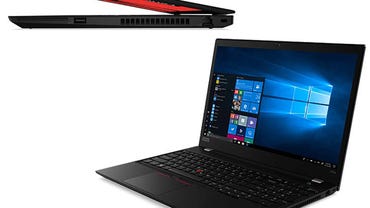
The 15.6-inch ThinkPad P15s isn't the most powerful of Lenovo's P-Series mobile workstations, but it's an attractive entry-level model that combines a lightweight, 1.75kg design with strong performance and competitive pricing.
In the US, a preconfigured ThinkPad P15s with a 10th-generation Core i5-10210U processor, 8GB of RAM, 256GB of SSD storage, Nvidia Quadro P520 graphics, and an FHD (1920 x 1080, 141.2ppi) display costs $1,169 (after discount, from $2,009). 'Build Your Own' options go up to a Core i7-10610U (+$510), 32GB of RAM (+$620) and a 4K (3840 x 2160, 282.4ppi) screen (+$445). There's also a 'Build with Linux' (Ubuntu 20.04) model, starting at $1,014.42 (Core i5, 8GB RAM, 256GB SSD, Quadro P520, FHD screen).
On Lenovo's UK website, prices start at £1,289.99 (inc. VAT) for a Core i7-10510U model with 8GB of RAM, a 256GB SSD, Quadro P520 graphics and an FHD screen. There are three customisable configurations, based on Core i5 (10210U, 10310U) and Core i7 (10510U) processors, all with 4K screens and Quadro P520 graphics.
The 4K display handles 100% of the Adobe RGB gamut, but there's no support for the DCI-P3 standard widely used in video editing, which suggests that the ThinkPad P15s is primarily aimed at 2D graphics and design use cases. However, there are other models in the ThinkPad P-Series that provide Xeon processors and more powerful GPU options for 3D design and video editing work.
Lenovo ThinkPad X1 Extreme Gen 3
10th-gen Intel Core CPUs and Nvidia GeForce GTX 1650 Ti GPU
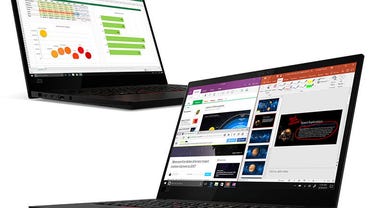
Lenovo's ThinkPad X1 range focuses on portability, and even this top-of-the-range Extreme model with its 15.6-inch display weighs in at around 1.7kg, while still offering professional-level features and performance. The 4K display with 3840-by-2160 resolution (282.4ppi) is bright and colourful, and supports 100% of the Adobe RGB colour gamut, so it will be suitable for a wide range of graphics and design tasks. There's no mention of the DCI-P3 standard, which is widely used in video editing.
The ThinkPad X1 Extreme that we reviewed a couple of years ago only provided two prebuilt configurations, but the current Gen 3 model now provides a much wider range of customisation options. Most of the entry-level models only offer FHD (1920 x 1080, 141.2ppi) resolution, though, so if you want a 4K display you'll need to step up to a starting price of $2,405.40 or £2,8199.99 (inc. VAT). That price also includes a 6-core Core i7-10750H processor running at 2.6GHz (up to 5.0GHz with TurboBoost), along with 32GB of RAM, 1TB of solid-state storage and Nvidia GeForce GTX 1650 Ti graphics.
But while Lenovo's website does provide a wide range of customisation options, you're stuck with that GTX 1650 Ti GPU, which suggests that the X1 Extreme is focusing on 2D graphics and design, rather than high-end video editing.
Microsoft Surface Book 3 for Business
Convertible design with 10th-gen Intel Core CPU and Nvidia GeForce or Quadro GPU

The detachable design of Microsoft's Surface Book has proven extremely popular, especially with creative users who enjoy the freedom of using it as a tablet with (optional $80/£100) stylus for sketching and visualisation work.
Standard Surface Book 3 models run Windows 10 Home, so business users who require Windows 10 Pro will need to choose the Surface Book 3 for Business variant.
Like its predecessor, the Surface Book 3 is available with either 13.5-inch or 15-inch displays, although creative users will probably prefer the 15-inch model with not-quite-4K display (3240 x 2160, 260dpi). There's a $1,699.99/£1,679 entry-level model based on a 10th-generation Core i5 processor with integrated Iris Plus graphics, but it's only the more expensive Core i7 configurations that offer a discrete GPU.
If you need discrete graphics, prices start at $2,099.99 or £2,079 with a quad-core Core i7-1065G7 running at 1.3GHz (up to 3.9GHz with TurboBoost), 16GB of RAM and a 256GB solid-state drive. That price includes an Nvidia GeForce GTX 1660 Ti GPU, but you can double the RAM and storage and step up to a Quadro RTX 3000 for a total price of $2,599.99 or £2,529.
MSI Creator 17
Large 4K Mini LED display with DCI-P3 support
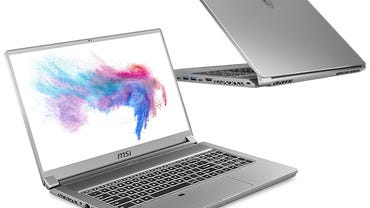
MSI is best known for its gaming laptops and displays, but it does have its Creator Series of laptops, which was recently updated with the new Creator 17. Suitable for a wide range of graphics, design and video work, the Creator 17 boasts an impressive 17.3-inch Mini LED display with 4K resolution (3840 x 2160, 254.7dpi), 1,000 nits brightness and support for the DCI-P3 colour standard widely used in professional-level video editing.
We're not sure we'd describe 2.5kg as 'ultra-light' but it's still good going for a 17-inch desktop replacement such as this, and MSI has clearly drawn on its gaming expertise to squeeze so much power into a chassis that's just 20mm thick.
In the UK, MSI's prices start at around £2,399 (inc. VAT) for a model with an 8-core Core i7-10875H running at 2.3GHz (up to 5.1GHz with TurboBoost), 16GB of RAM, 512GB of solid-state storage, and Nvidia GeForce RTX 2060 graphics. Customers in the US have a slightly wider choice, with some less expensive models offering FHD (1920 x 1080, 127.3ppi) resolution. However, creative users who prefer a 4K display will have to step up to $2,799, although US models do provide 32GB of RAM and 1TB solid-state storage, along with a slightly faster GeForce RTX 2070 GPU.
Razer Blade 15 Studio Edition
4K OLED touch screen, Nvidia Quadro RTX 5000 graphics
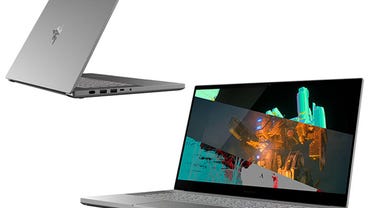
Razer has always been known for its gaming gear, including the popular Blade range of laptops, which combine powerful graphics performance with attractive, slimline designs. But that graphics performance can be turned to other tasks as well, and Razer has produced a number of Blade laptops that are specifically aimed at designers and creative users.
The company's Blade 15 Studio Edition boasts a 15.6-inch OLED touch screen with 4K resolution (3840 x 2160, 282.4dpi) in a sleek design that measures just 19.9mm thick and weighs 2.1kg.
For $3,799.99 or £3,849.99 (inc. VAT), you get a six-core Core i7-10875H processor running at 2.3GHz (up to 5.1GHz with TurboBoost), with 32GB of RAM and a 1TB solid-state drive. Graphics are handled by Nvidia's high-end Quadro RTX 5000.
Aero 15 Vs Dell Xps 15 for Video Editing
Source: https://www.zdnet.com/article/best-laptop-for-graphic-design/
0 Response to "Aero 15 Vs Dell Xps 15 for Video Editing"
Post a Comment